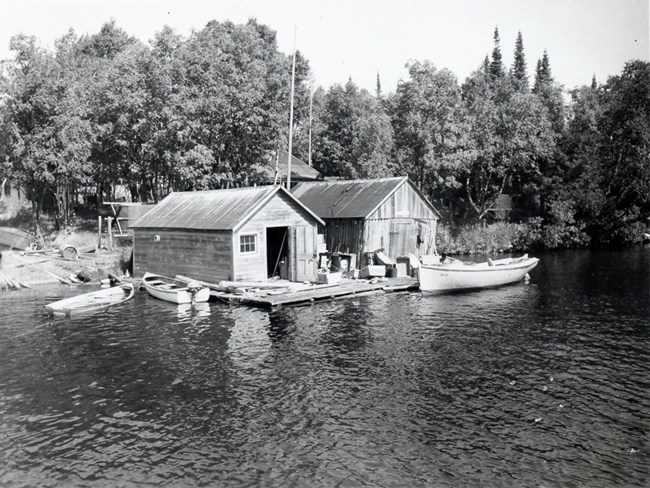
National Visual Inventory Cards 50-1093 The Most Lasting Commercial EndeavorThe historic structures and outbuildings you see here are part of Isle Royale's rich cultural heritage. This particular complex was associated with a commercial fishing interest, an activity that has a long and interwoven history on Isle Royale. In contrast with other island endeavors, such as mining, lumbering and tourism, commercial fishing has provided a livelihood for men from the 1830's to times more recent. Nearly every inlet, island, and sound of the archipelago has had its cluster of weatherbeaten shanties, wharves and fishhouses. All commercial fishery locations were subsequently purchased by the federal government following creation of Isle Royale National Park in 1931. Even though the National Park Service now owns all the land and buildings on Isle Royale, some families still return to the former fisheries and are allowed to do so through a special agreement with the National Park Service. 
History of Fishing at Isle Royale
Commercial Fishing in the 19th and 20th Centuries: An Account of the Methods Employed and Most Sought-after Fish American Fur Company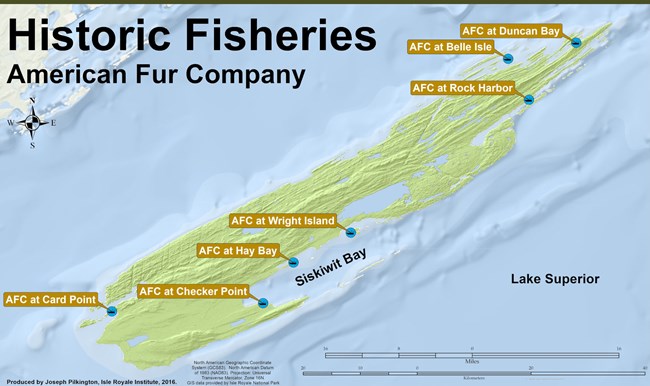
Isle Royale Institute / Joseph Pilkington Washington Harbor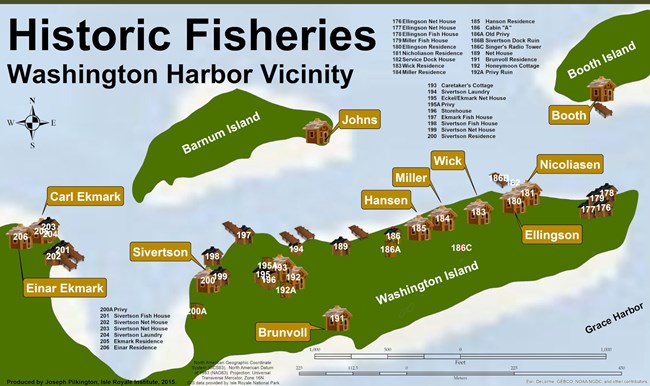
Isle Royale Institute / Joseph Pilkington Siskiwit Bay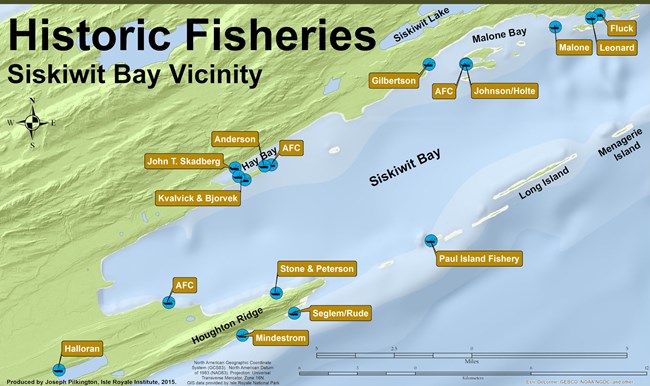
Isle Royale Institute / Joseph Pilkington North Shore
Isle Royale Institute / Joseph Pilkington Tobin/Rock Harbor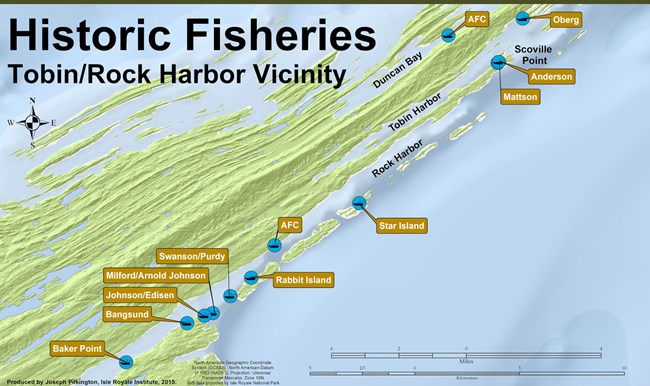
Isle Royale Institute / Joseph Pilkington Chippewa Harbor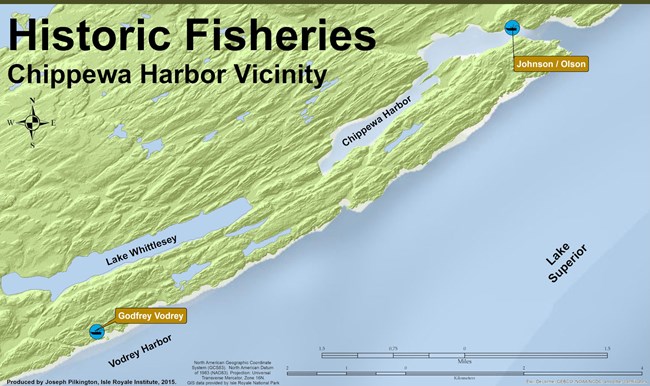
Isle Royale Institute / Joseph Pilkington 
National Visual Inventory Cards 50-1088 From Private Property to National ParkMany of the fisheries were in place before National Park status, some having been established in the late 19th century. However, most fishermen were squatters and did not own the island properties they occupied. In such cases fishermen were permitted to fish commercially within Park waters but on a modest scale. For the fewer number of cases where land was indeed owned, life leases were granted in return for a lower purchase price. The lease agreement was a concept adapted from Shenandoah National Park and allowed former property owners and their next of kin provisional use of the fishery buildings. As part of the agreement, maintenance and upkeep would be performed by the families. In many respects the presence of the remaining fisheries on Isle Royale today can be credited to the tenure of the life lease. |
Last updated: December 6, 2022
